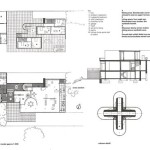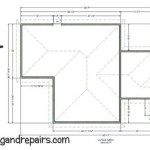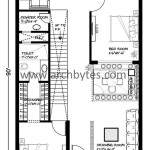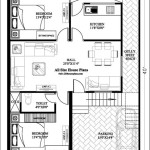Small House Plans Free: A Guide to Affordable and Sustainable Living
The pursuit of homeownership often presents significant financial hurdles, particularly given rising construction costs and land prices. Amidst these challenges, small house plans offer a compelling alternative for individuals and families seeking affordable and sustainable living solutions. The availability of free small house plans further democratizes access to housing, empowering prospective homeowners to explore design options and potentially reduce upfront project expenses. However, it is crucial to understand the scope and limitations of free plans to ensure a successful construction project.
This article explores the concept of small house plans, focusing on the availability of free resources, their potential benefits, and the crucial considerations involved in utilizing them effectively. It aims to provide a comprehensive overview for individuals considering this path toward homeownership, emphasizing the importance of professional review and adaptation to specific site conditions and building codes.
Understanding the Landscape of Free Small House Plans
The term "free small house plans" encompasses a wide range of resources available online. These can range from simple schematic designs to more detailed architectural drawings. The sources vary significantly, including architectural websites, home improvement blogs, government agencies, and non-profit organizations dedicated to affordable housing. The quality and usability of these plans also vary considerably. Some may be outdated, lack critical details, or not be compliant with current building codes.
A critical distinction must be made between conceptual plans and construction-ready documents. Conceptual plans typically provide a basic layout and aesthetic vision, but they lack the detailed engineering specifications, structural calculations, and material lists necessary for obtaining building permits and constructing a safe and durable structure. These plans often serve as a starting point, requiring significant modification and augmentation by qualified professionals.
Construction-ready plans, on the other hand, are more comprehensive and include detailed drawings, specifications, and calculations that are required for building permit application and construction. While less common in the "free" category, some organizations offer these plans as part of their mission to promote affordable housing. Even in these cases, it is essential to verify the plans’ compliance with local building codes and ensure they are suitable for the specific site conditions.
Beyond the plans themselves, understanding the licensing and usage rights is paramount. Many free plans are offered under specific creative commons licenses, which dictate how the plans can be used, modified, and distributed. It is crucial to carefully review the license terms to ensure compliance and avoid potential legal issues. Some plans may be free for personal use but require a fee for commercial applications.
The availability of free plans can be particularly beneficial for individuals with some construction experience or those who are willing to invest time in researching and adapting the plans to their specific needs. However, it is not a substitute for professional architectural and engineering services, especially for individuals with limited construction knowledge.
Benefits and Drawbacks of Utilizing Free Small House Plans
Choosing free small house plans presents both advantages and disadvantages that must be carefully weighed before proceeding. On the positive side, the primary benefit is the potential cost savings associated with avoiding the expense of custom architectural design. For budget-conscious individuals or families, this can be a significant factor in making homeownership more attainable.
Free plans also offer a starting point for exploring different design options and generating inspiration. Reviewing various layouts, styles, and features can help homeowners identify their preferences and prioritize their needs. This can inform the design process, even if the final plan is not directly based on the free resource.
Furthermore, the availability of free plans can promote innovation and experimentation. Individuals with a strong DIY inclination may find these plans a valuable tool for exploring alternative construction methods, sustainable building materials, and energy-efficient design strategies.
However, the drawbacks of relying solely on free small house plans are equally significant. The most critical concern is the potential lack of code compliance. Building codes vary significantly by location and are constantly evolving to reflect advancements in construction technology and safety standards. Free plans may not be updated to reflect these changes, potentially leading to costly rework and delays during the permitting process.
Another significant challenge is the lack of site-specific customization. Every building site has unique characteristics, including soil conditions, topography, sun exposure, and prevailing winds. Free plans are typically generic and do not account for these factors. Adapting a plan to a specific site may require significant modifications, potentially negating the initial cost savings.
Furthermore, free plans often lack the level of detail and documentation required for accurate cost estimation and construction. This can lead to unexpected expenses and budget overruns. It is essential to obtain detailed material lists, specifications, and structural drawings to accurately estimate the cost of materials and labor.
Finally, relying on free plans without professional review can increase the risk of structural defects and safety hazards. A qualified architect or engineer can identify potential weaknesses in the design and recommend appropriate modifications to ensure the building’s structural integrity and safety.
Key Considerations for Using Free Small House Plans Effectively
Despite the potential drawbacks, free small house plans can be a valuable resource if used strategically and responsibly. The key to success lies in understanding their limitations and taking appropriate steps to mitigate the risks. Several critical considerations must be addressed:
Professional Review: Irrespective of the perceived completeness of a free plan, it is imperative to have it reviewed by a qualified architect or structural engineer. This professional assessment should focus on code compliance, structural integrity, and site-specific suitability. The reviewer can identify potential issues and recommend necessary modifications to ensure the building’s safety and durability. The cost of this professional review is a necessary investment to avoid potentially far more significant expenses later on.
Local Building Codes and Permits: Thoroughly research and understand the local building codes and permit requirements. Contact the local building department to obtain information on specific regulations, inspection processes, and required documentation. Ensure that the free plan, along with any modifications, complies with all applicable codes and regulations. The permitting process can be complex, and seeking assistance from a permit expediter may be beneficial.
Site Adaptation: Adapt the plan to the specific characteristics of the building site. This may involve modifying the foundation design to accommodate soil conditions, adjusting the window placement to optimize solar gain and ventilation, and reorienting the building to capitalize on views and minimize exposure to harsh weather. A site survey conducted by a licensed surveyor is essential for accurate site planning.
Detailed Documentation: Supplement the free plan with detailed material lists, specifications, and structural drawings. This documentation is essential for accurate cost estimation, obtaining building permits, and guiding the construction process. Consider hiring a drafting service or contractor to create these documents based on the free plan and the professional review.
Cost Estimation and Budgeting: Develop a comprehensive budget that includes all anticipated costs, including materials, labor, permits, professional fees, and contingency funds. Obtain multiple quotes from contractors and suppliers to ensure competitive pricing. It is crucial to be realistic about the costs and to account for potential unexpected expenses.
Construction Management: Carefully plan and manage the construction process. This may involve hiring a general contractor or acting as your own contractor. If acting as your own contractor, be prepared to dedicate significant time and effort to coordinating subcontractors, managing schedules, and overseeing the quality of work. Thorough communication and documentation are essential for successful project management.
By adhering to these considerations, individuals can maximize the benefits of free small house plans while minimizing the risks. It is essential to approach the process with realistic expectations and a willingness to invest in professional expertise and detailed planning. The ultimate goal is to create a safe, durable, and affordable home that meets the homeowner’s needs and preferences.

27 Adorable Free Tiny House Floor Plans Small

Free Small House Plans For Old Remodels Floor Bedroom

27 Adorable Free Tiny House Floor Plans Craft Mart

27 Adorable Free Tiny House Floor Plans Craft Mart

10 Free Small Home Plans Thehomesteadingboards Com

Barrier Free Small House Plan 90209pd Architectural Designs Plans

Simple House Plans Small Free Nethouseplans With Photos

3 Bedroom House Plans Home Designs Nethouseplansnethouseplans

Small House Plans 7x12 With 2 Beds Free Design Plan

Small House Floor Plans Country








